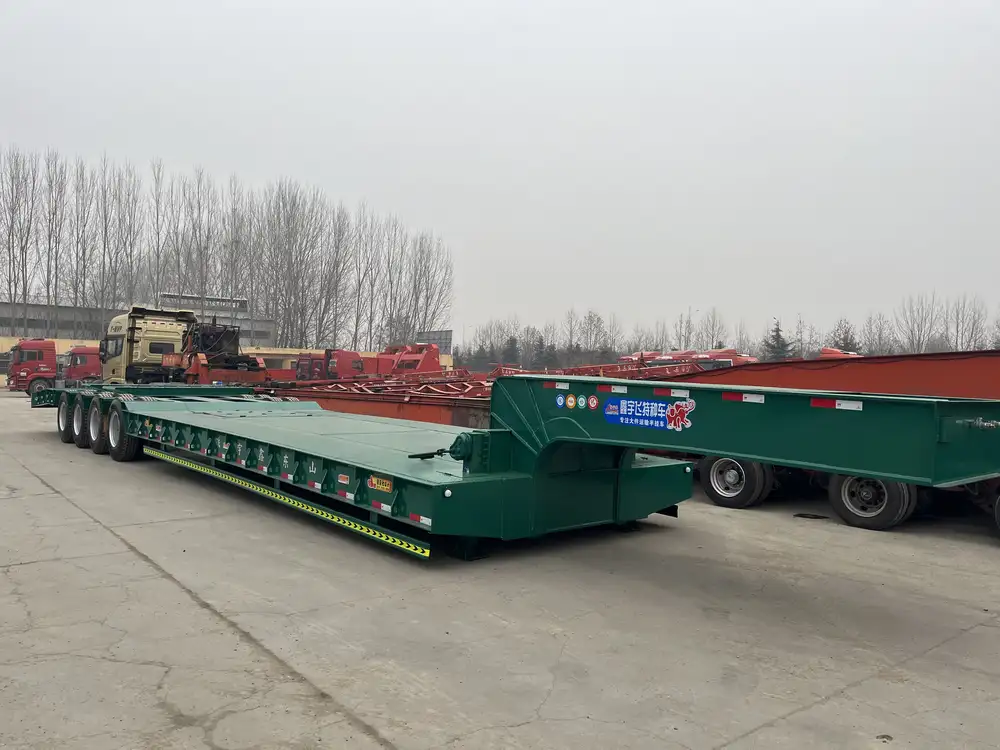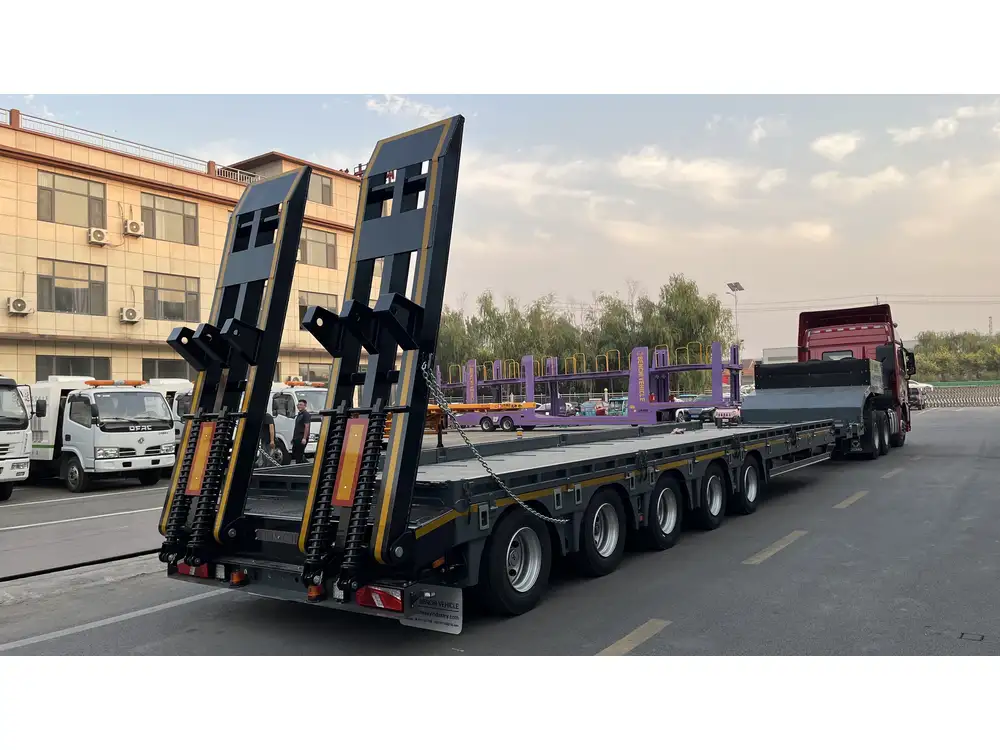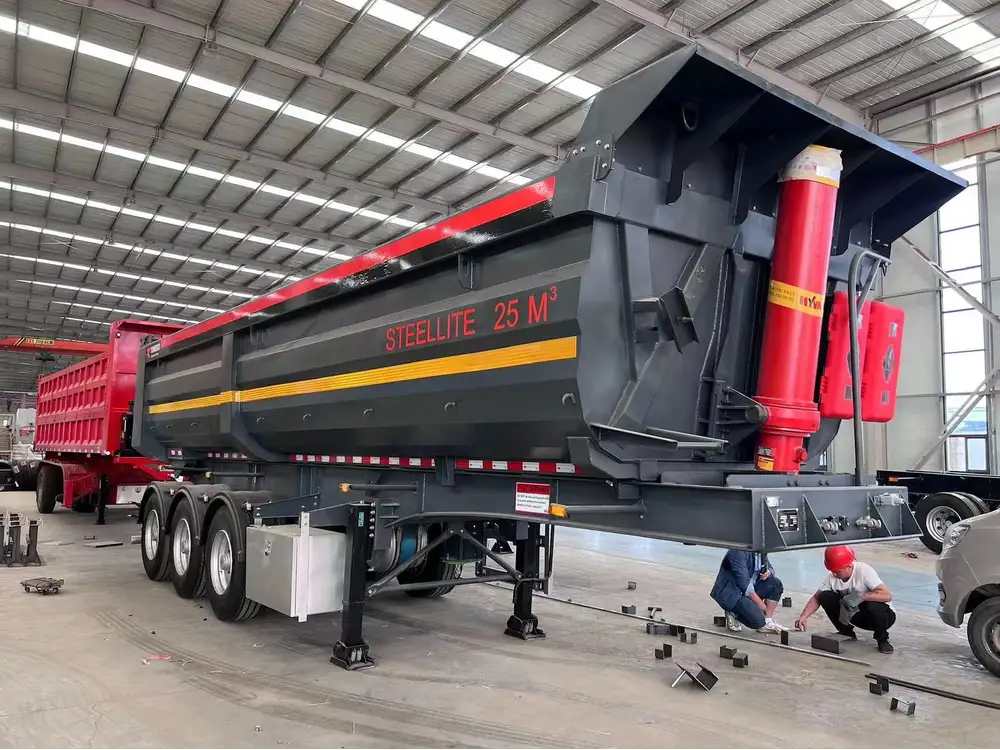When it comes to transportation of goods, especially perishables, understanding the temperature control in a semi-trailer is paramount. As manufacturers of semi-trailers, we acknowledge that temperature plays a critical role in preserving the integrity of cargo. In this article, we will explore the factors affecting heat levels inside semi-trailers, the typical temperature ranges based on various conditions, and strategies for maintaining optimal conditions.
Understanding Temperature Fluctuation in Semi-Trailers
1. Physical Characteristics of Semi-Trailers
Insulation Properties: The thermal insulation used in the construction of semi-trailers is crucial in regulating internal temperatures. High-quality insulation materials, such as polyurethane and polystyrene, minimize heat transfer, while poor insulation can lead to extreme temperature increases.
Material Composition: The materials from which the semi-trailer is constructed influence thermal retention. Aluminum and steel trailers generally conduct heat more readily than those made from composite materials.
| Material | Heat Retention Properties | Common Uses |
|---|---|---|
| Aluminum | Moderate | General cargo |
| Steel | High | Heavy-duty |
| Composite | Excellent | Refrigerated |

2. Environmental Conditions
The external environment is a significant factor that dictates how hot it gets inside a semi-trailer.
Ambient Temperature: Depending on the geographic location and season, outside temperatures can vary immensely. In scorching summer months, ambient temperatures can exceed 100°F (38°C), leading to elevated internal temperatures.
Sun Exposure: Direct sunlight can dramatically elevate temperatures inside a trailer. Parking in the shade can reduce heat accumulation significantly.
3. Ventilation Mechanisms
Adequate ventilation is essential. Many modern semi-trailers are equipped with vents to allow airflow, which helps dissipate heat. Understanding the dynamics of good airflow can mitigate temperature spikes, especially during long hauls.
Typical Temperature Ranges

1. Common Heat Levels in Different Scenarios
| Scenario | Possible Internal Temperature (°F) | Possible Internal Temperature (°C) |
|---|---|---|
| Ambient Temperature of 80°F | 100 – 120°F | 38 – 49°C |
| Ambient Temperature of 100°F | 130 – 150°F | 54 – 66°C |
| Direct Sunlight on Trailer | 150°F and above | 65°C and above |
Key Insight: The internal temperature can easily exceed the outside temperature by 20°F to 50°F (11°C to 28°C) depending on the insulation, materials, and exposure to sunlight.
2. Understanding Perishable Cargo and Temperature Sensitivity
Perishable items, such as dairy, meat, or certain fruits, have specific temperature requirements to ensure they don’t spoil. For instance:
- Meat: Ideal temperature range of 28°F to 32°F (-2°C to 0°C)
- Dairy: Should be kept below 40°F (4°C)
- Produce: Varies widely, but many items prefer temperatures below 55°F (13°C)
Insight: Failing to maintain these temperatures can result in spoilage, financial loss, and health hazards.
Strategies for Temperature Control

1. Investing in Quality Insulation
To combat the extreme temperatures that can build up in a semi-trailer, investing in high-quality insulation is a non-negotiable.
- Refrigerated Trailers: For transport requiring temperature regulation, opt for refrigerated semi-trailers that utilize advanced insulation combined with active cooling systems.
2. Implementing Temperature Monitoring Technology
Utilizing smart technology, such as temperature sensors and GPS tracking, allows for continuous monitoring of the internal climate.
- Real-time Alerts: This tech can send alerts directly to operators if temperatures are nearing critical levels, allowing for preventative measures to be taken before spoiling occurs.
3. Strategic Loading Practices
Understanding how to load cargo properly can prevent temperature variations.
Airflow Management: Ensure that cargo is not packed too tightly, which can obstruct airflow and create hot spots.
Thermal Blankets: Use thermal blankets for sensitive items to provide an additional layer of insulation.

4. Selecting Appropriate Parking Locations
Choosing the right parking spot can help tremendously.
Shade Consideration: Whenever possible, park in shaded areas to mitigate temperature increase.
Fan Utilization: For non-refrigerated trailers, utilizing portable fans can aid in heat dissipation when parked.
Understanding User Needs
1. FAQs on Semi-Trailer Temperature Control
How long can cargo withstand heat before spoiling?
- The duration varies by product, but typically most perishables can endure temperatures above their threshold for only a few hours before spoilage begins.
What correction measures can be taken in case of rising temperatures?
- Immediate action involves checking insulation integrity, increasing ventilation, or utilizing cooling systems if available.

2. Real-Life Case Study: Temperature Management Success
A logistics company experienced severe losses due to spoilage from temperature mismanagement in their fleet. Following a comprehensive review, they implemented:
Upgraded Insulation on Trailers: They replaced outdated insulation with modern, higher-density materials.
Temperature Sensors: Installing sensors in the cargo space allowed real-time monitoring and reduced spoilage by 30% within a year.
Conclusion: Safeguarding Cargo Integrity
Understanding how hot it gets in a semi-trailer is vital for the successful transportation of goods, particularly perishables. By recognizing the environmental factors, leveraging technology, and employing strategic loading and parking practices, we can significantly reduce heat buildup and safeguard cargo against spoilage.
Ultimately, the success of a logistics operation hinges on temperature control within semi-trailers. By adopting a multi-faceted approach, stakeholders can not only enhance their operational capabilities but also maintain the quality of the transported goods.



